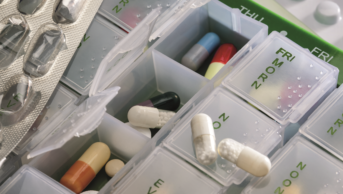
How did you become a Qualified Person for Pharmacovigilance?
After completing my pre-registration training in 1980, I stayed in community pharmacy as a locum pharmacist. However, I became interested in research and made my ambitions known at an early annual appraisal. My manager agreed to help me transfer to the company’s research and development division.
In my new role I was trained in regulatory affairs and I quickly discovered the responsibilities that came with the generic technical manager’s post, including medical information, local distribution and warehousing, and pharmacovigilance, which at the time was a relatively unknown and yet rapidly expanding area. I was nominated to take on the responsibilities of the European Economic Area Qualified Person for Pharmacovigilance (QPPV) in 2003.
Although there are no formally recognised qualifications for this role, the marketing authorisation holder must ensure that the QPPV has acquired adequate theoretical and practical knowledge for the performance of pharmacovigilance activities.
When I was appointed as QPPV by the marketing authorisation holder, we determined that my role as a board director, qualification as a pharmacist and responsibility for the safety department was sufficient. I completed a number of professional development courses and attended various symposia to gain the theoretical knowledge while in post — and I still keep up to date with changes in legislation through continuing professional development.
What is your current role?
I am now an independent industry consultant, providing QPPV services to several companies where a full-time role is not justified. This may be because a company has a small number of products, or because a larger company needs someone to be responsible for their generic portfolio. I also provide independent pharmacovigilance auditing services, which can range from auditing a small local affiliate office to auditing a specific function of a global system for a multinational company.
My responsibilities can include routinely maintaining systems and procedures, processing adverse event reports and creating detailed action plans for examining unexpected or high frequency adverse events associated with a medicine. Occasionally, when an urgent safety issue arises, a QPPV must notify a competent authority, such as the European Medicines Agency’s Pharmacovigilance Risk Assessment Committee (PRAC). PRAC can then make a recommendation for an action plan, which may range from taking no action to withdrawing the medicine from the market. Thankfully, the latter occurs rarely for me, but I need to ensure that each system is fit for purpose and reflects current legislation — for example, I have to be aware of reporting requirements in different countries.
How does your role as a QPPV differ from other QP roles?
The responsibilities of the Qualified Person responsible for securing production, importation and batch release and the EEA QPPV are both described in legislation. Building and maintaining quality in a production process has much in common with a safety data collection process — identifying and managing risks, implementing robust procedures and delivering effective training to all personnel.
However, information from a pharmacovigilance process is largely derived from surveillance, rather than formal testing. Collecting and interpreting information from various sources, including digital media and market research, requires a completely different approach to dealing with chemical analytical reports and the controls around a production environment. Making sure that every company employee has been trained to identify a safety report and the reporting procedure is central to the process, and so this scope takes the QPPV from the confines of the laboratory into every facet of the business.
What do you enjoy most about your work?
I enjoy working with medical and regulatory colleagues, but I am also aware that it is my responsibility to know and set targets and ensure that everything comes together. Pharmacovigilance processes have become increasingly complex and are subject to closer scrutiny, so I appreciate the recognition that the pharmacovigilance team generally receives during inspections for achieving compliance for the company.
It is important that I communicate the key messages about what makes an effective pharmacovigilance system, which involves delivering training and conducting audits. I enjoy interacting with and helping people in both of these situations, and seeing them gain confidence. This confidence is important because an audit scenario can replicate an inspection, which can be intimidating for some individuals.
What is your ultimate career goal?
Pharmacovigilance was historically seen as the department of “bad news”, perhaps because a report of an adverse event has negative connotations. I hope I can play a small part in changing this attitude. An effective risk management plan can make some new products more accessible to more patients and, under some circumstances, more quickly. Timely information derived from pharmacovigilance surveillance can improve compliance and promote more effective medicines use.


